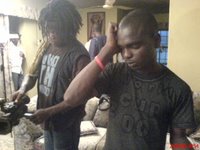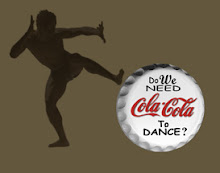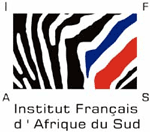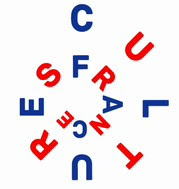Saturday
Do we need COLA COLA to dance?
PROject ARTistery
The Project is an artistic expression of our "patriotism", declaration of our engagement in a structural development that is in the making as well as our responsibility as artistes for change, it is a sincere laboratory experimentation of an existing theory. Our reference points or case study could be coming from dance perspective or photography and cinematography, but its a valid element for development in general using alternative measures.
- Dance/street Theatre:
The project rallies around Dance which is the centre of attraction here, and as it was showcased mostly in public and private spaces it broke into the frontiers of street theatre. Meanwhile, the Happenings were absolutely un-official; no posters, no info, even we didn't necessarily know where the next performance spot may be just like in ancient travelling theatres. This "piece", more of improvisation is to be an alternative artform to the formal exhibition of dance in the theatre, it creates its own context, since there are few or no ready made theatre venues or audience to begin with, and there is only a few practice of alternative movements in the continent today, the creation of this piece is not to insert a new style into existing buildings or enticing already formed audience away from existing venues but just to be involved in an special broad oppositional art experiment.
This Alternative art movement could be cited as a significant part of, or even an influence on the general cultural and socio-political development of Africa and building of our local market and audience.
- Audio Visual:
Another part of the research is the documentation which was aimed at capturing the reaction of the "naive" public who audience our performances, seeing the different countries and their different present situation talking about culture and different internal cultural policies which certainly differs depending on their level of acceptability to arts and human tolerance in general, as well as a showcase of Africa in its diversity. The documentary film in its own special way sways between questions, dance, interviews, people, politics and city life, moving into the city to meet people in different realities and with a totally different point of view to arts and culture, from the regular citizen to the executives, politicians and financiers as well as the “culture people” ending it with another phase of meeting with other African creators and operator in the Diaspora.
- Book:
At the end of the touring phase of the research, while the editing was going on, we went back to the drawing board to begin a completely new phase of summarizing the whole experience into publication, a photographic illustration of the theme "Do we need cola-cola to dance?". This photographic documentary book is accompanied with statements of some important personalities in the city where the research were being carried out, the city in its utmost specificity, the audience in their collective and individual expressions, our own perception and personal point of view and the experiences we came back with during the research and other contributed articles to enhance our preoccupation.
REsearch Location and OUTcome
In order to gain access to different countries with their different internal cultural policies and human tolerance built on the knowledge, experience, and needs of local residents, we decided to spread this research into three similar locations in 6 cities in Africa (Lagos, Cairo, Johannesburg, Maputo, Nairobi and Yaoundé), organize happenings in public spaces varying from market places to malls, university surroundings to the beach, as well as the corners of the streets and other available spaces that could accommodate such manifestation. One important criteria we put into consideration is the possibility of balancing the gaps by making sure that our happenings travels from the locality of the low income earners to the rich quarters and also the young intellectual sects in the universities, in order to have a broader view of the level of acceptance of dance as a form of art in Africa.
The outcome of this new vision research will certainly bring the culture sector in Africa some very positive attention in the aspect of the quality of audience we get, finance and our market structure if we succeed in getting maximum media coverage after the project’s Cinema premier and book launch that will be held alongside Ewa Bami’ jo, a three day summit that reunites series of cultural operators, Artistes, cultural financiers, journalists/Art critics, film makers, Writers and culture ministries in the commercial city of Nigeria. LAGOS, during the month of August 2008 with the themed: "Home and Abroad".
ApproacH
This project is aimed to combine entertainment with database, discussion, socio-political proposals, recommendations and policies of culture, it represent our contribution to social engagement, primarily committed to bringing about actual changes in specific communities towards arts and culture. Our priority is our audience; all action, aesthetics and pragmatics, stories and documentary, and so on – was inscribed with questions of fundamental importance to our audience. Always, our starting point was the nature of the audience we were faced with and the location we found ourselves, the aesthetics of our performances was tailor-made and shaped to match with the locality we found ourselves. However, our choice of research was guided by a more fundamental impulse than the quest for mere traveling and performing.
ObjECTives
- Do we need Cola to Dance? Seeks to be part of the growing network of choreographic and research initiatives on the continent.
- By having discussions with important poeple in the region with similar types of community but not neccesarily having same problematic point of view, there might be a wider effect, such project as ours might contribute to some kind of progressive social, even cultural politics development.
- This is just an additional initiation of new structures and alternative movements to support the projection of contemporary Arts to local audience especially through the media.
- Being a medium of appeal to other African creators outside Africa to go and contribute to changes in the face of the Arts scene of their various home countries which has a long way to go.
- To be a source of inspiration to those large numbers of talented youth in Africa who are not encouraged, the Government and other enterprises, funding organisations and multinational companies who might be motivated to support the work of arts in Africa.
Friday
Phase/Activity
Tuesday
Who'S whO.
- The research project is authored and produced by Qudus Onikeku, a dancer, acrobat, actor but also a writer, his Yoruba roots holda peculiar aspect of his art, for a decade he has been prsonality in the world of dance and arts in Lagos and toured over 26 countries around the globe, he presently a student of the National Higher School for Circus arts in France.
- Emeka Okereke is a Nigerian photographer who came in cont
act with photography in 2001. He will be handling the direction of photography in the project, His works mingles between conceptual photography and documentary. Over the past years, he has worked strictly on black & white, but recently employing other media (graphics, video, sound, etc) in the presentation of photography. Held series of exhibitions in Africa and Europe both solo and group. He is presently a student of master of Arts in the School of Fine Arts. Paris.

- Matthew Ogunnola is the director of productions for 2ru Renaissance network, and will be co-directing the project, he holds a diploma in mass communication, Started as a Production assistant on radio with the Ogun state broadcasting corporation, Nigeria. Directed/produced notable programmes on popular TV stations as well as a presenter/announcer on Radio and television station in Nigeria, he presently runs his weekly programme E-ZONE in Nigeria.







